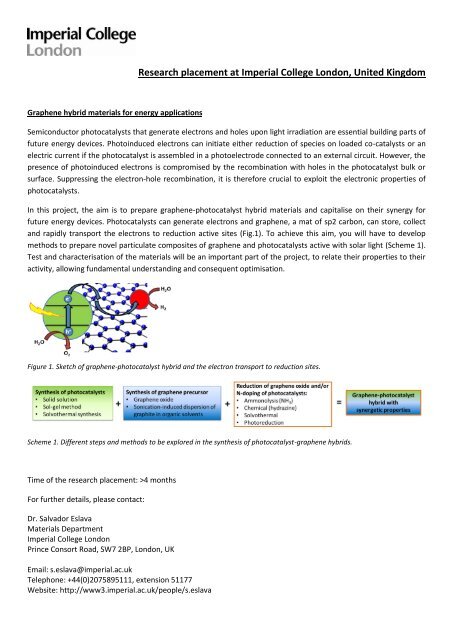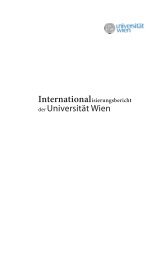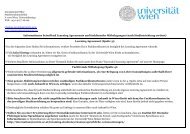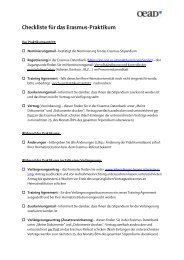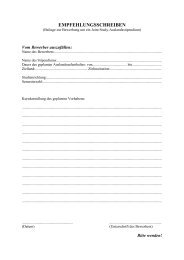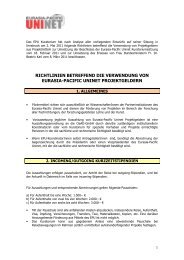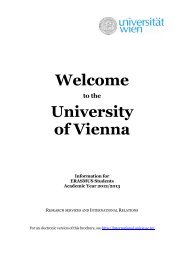Research placement at Imperial College London, United Kingdom
Research placement at Imperial College London, United Kingdom
Research placement at Imperial College London, United Kingdom
You also want an ePaper? Increase the reach of your titles
YUMPU automatically turns print PDFs into web optimized ePapers that Google loves.
The Centre for Educ<strong>at</strong>ional Development raises and consolid<strong>at</strong>es the profile of learning, teaching and educ<strong>at</strong>ionaldevelopment throughout the <strong>College</strong>. Newly-appointed non-clinical lecturers will be expected to develop andexpand their teaching skills, and there are many learning and teaching activities for more experienced staff.On 1 October 2011, the Gradu<strong>at</strong>e School of Life Sciences and Medicine merged with the Gradu<strong>at</strong>e School ofEngineering and Physical Sciences, to form a single entity. The merged Gradu<strong>at</strong>e School is the focus of postgradu<strong>at</strong>eeduc<strong>at</strong>ion and research and maintains, enhances and monitors quality, dissemin<strong>at</strong>es best practice, while initi<strong>at</strong>ingand developing new programmes, particularly those with an interdisciplinary slant. It also has quality assuranceresponsibilities for the two non-faculty departments of Humanities and the Business School.The <strong>College</strong>’s teaching quality is audited regularly, both internally and externally. Recent external audit foundteaching quality to be of a high standard.2. The Faculty of Faculty of EngineeringThe Faculty of Engineering is one of three faculties within <strong>Imperial</strong> <strong>College</strong> <strong>London</strong> and is led by the Dean, ProfessorJeff Magee. The Faculty seeks to provide intern<strong>at</strong>ional leadership in engineering research and educ<strong>at</strong>ion and iswidely recognised as a world-leading engineering school. In the Times Higher Educ<strong>at</strong>ion World University Rankings2011-2012 the Faculty was ranked 4 th in Europe and 10 th in the world for Engineering and Inform<strong>at</strong>ion Technology.Our Faculty is unique in the UK in supporting world-class educ<strong>at</strong>ion and fundamental research across the full rangeof engineering disciplines. All nine of our academic departments are loc<strong>at</strong>ed on a single campus in SouthKensington, giving a concentr<strong>at</strong>ion of talent th<strong>at</strong> cre<strong>at</strong>es a stimul<strong>at</strong>ing and vibrant research culture which promotesmultidisciplinary collabor<strong>at</strong>ions and <strong>at</strong>tracts intern<strong>at</strong>ionally leading researchers and scholars.Our academic departments deliver world-class educ<strong>at</strong>ion in engineering in order th<strong>at</strong> our gradu<strong>at</strong>es possess theskills, knowledge and <strong>at</strong>titudes necessary to become intern<strong>at</strong>ional leaders in engineering industry and academia. Weprovide our students with an outstanding engineering educ<strong>at</strong>ion th<strong>at</strong> brings together cutting edge researchers,exceptional teachers and st<strong>at</strong>e-of-the-art facilities in inspiring physical and virtual environments. Students <strong>at</strong><strong>Imperial</strong> will meet, work and live with people studying every aspect of engineering.The Faculty is home to 1,300 staff (360 academics, 630 researchers and 310 support staff) and 5,800 students (ofwhom 1,300 are research students). The Faculty is a powerhouse in research across the engineering sciences, withresearch funding in excess of £95M per annum.Please see the Faculty of Engineering web pages for further inform<strong>at</strong>ion:http://www.imperial.ac.uk/engineeringThe Faculty of Engineering is based <strong>at</strong> South Kensington and comprises nine Departments covering all aspects ofEngineering:AeronauticsBioengineeringChemical Engineering and Chemical TechnologyCivil and Environmental EngineeringComputingEarth Science and EngineeringElectrical and Electronic EngineeringM<strong>at</strong>erialsMechanical EngineeringThe Faculty was formed in August 2001 and formally inaugur<strong>at</strong>ed in August 2002.3. Department of M<strong>at</strong>erials
The Department of M<strong>at</strong>erials <strong>at</strong> <strong>Imperial</strong> <strong>College</strong> <strong>London</strong> is the oldest and largest department of its kind in the UK.We have a teaching quality assessment score of 24/24 and received an excellent profile in the 2008 RAE with 20% ofour research being ranked world leading. Since 2006 we have expanded our teaching and research programmessignificantly. Current Departmental popul<strong>at</strong>ion is as follows:Academic Staff: 34<strong>Research</strong> Staff: 78Postgradu<strong>at</strong>e <strong>Research</strong> Students: 40-50 (intake per annum)MSc Students: 50-70 (intake per annum)Undergradu<strong>at</strong>e Students: ~85 (intake per annum)Departmental FacilitiesThe Department houses top class facilities for M<strong>at</strong>erials processing, property measurement and characteris<strong>at</strong>ion.Major research equipment includes both scanning and transmission electron microscopes including amonochrom<strong>at</strong>ed FEG-STEM Titan microscope with unique analytical capabilities, Secondary Ion Mass Spectrometer(SIMS) systems including a newly installed Time-of-Flight SIMS and Low Energy Ion Sc<strong>at</strong>tering unit, Focused Ion Beam(FIB) systems (Dual Beam and FIB-SIMS), a hot isost<strong>at</strong>ic press, a vacuum hot press, and an isost<strong>at</strong>ic compactionpress. We have st<strong>at</strong>e-of-the-art X-ray equipment and thermal analysis suites (including a laser flash thermaldiffusivity unit). We are presently in the process of preparing labor<strong>at</strong>ories for an ambient XPS instrument and newthin film deposition appar<strong>at</strong>us. In addition, we have recently refurbished labor<strong>at</strong>ory space for biom<strong>at</strong>erials, metalsprocessing and functional m<strong>at</strong>erials and provided two new lecture rooms for MSc teaching. The thin film depositionfacility includes three pulsed laser deposition chambers, sputtering, e-beam evapor<strong>at</strong>ion and MBE.Our l<strong>at</strong>est five-year plan includes expanding our current efforts in the following areas:Energy (including nuclear and fuel cells).Novel Electronic Devices (thin films, sensors, photonic crystals).Biom<strong>at</strong>erials, Tissue Engineering and Regener<strong>at</strong>ive Medicine.Functional M<strong>at</strong>erialsEnvironment (clean up, pollution control and prevention).MetalsCeramicsInterdepartmental Collabor<strong>at</strong>ionInteraction between the Department of M<strong>at</strong>erials and other departments of <strong>Imperial</strong> <strong>College</strong> <strong>London</strong> is key to ourresearch programmes. Much of the collabor<strong>at</strong>ion takes place through interdepartmental centres and groupsincluding the <strong>College</strong> Institute the Energy Futures Labor<strong>at</strong>ory, Thomas Young Centre for Theory and Simul<strong>at</strong>ion ofM<strong>at</strong>erials as well as LCN. The Energy Futures Labor<strong>at</strong>ory was launched in November 2005 by the UK’s then EnergyMinister Malcolm Wicks under the direction of Professor Nigel Brandon (in Earth Science and Engineering) and hasbeen established to:• Understand and solve wide ranging and cross-cutting energy problems via an interdisciplinary approach.• Draw on <strong>Imperial</strong>’s wealth of knowledge in energy technologies and integr<strong>at</strong>ed systems design coupled withits impressive track record in innov<strong>at</strong>ion and entrepreneurship.• Work with industry, Government and funding agencies to focus the extensive energy portfolio of one of theworld’s top research Institutions on key energy issues.<strong>Imperial</strong> has some £20M pa. in funding, over 200 projects, and around 250 staff and their research teams working in
the energy sector. The Department has a strong and leading role in the development of m<strong>at</strong>erials for energyconversion, being active in both the Supergen fuel cell consortia and cross-college solar energy activities. TheDepartment houses the Centre for Nuclear Engineering which brings together staff across the college in one of themost comprehensive research and teaching groups dedic<strong>at</strong>ed to nuclear engineering and science.The Department also has a strong involvement in the LCN a joint initi<strong>at</strong>ive with University <strong>College</strong> <strong>London</strong>. TheDepartment further contributes to the LCN through the Thomas Young Centre for M<strong>at</strong>erials Modelling under thedirection of Professor Mike Finnis. Mike (like Peter Haynes, Arash Mostofi and Paul Tangney) is appointed jointlywith the Physics Department.Clearly, many opportunities exist for collabor<strong>at</strong>ion within the <strong>College</strong> but the successful candid<strong>at</strong>e would beexpected to develop n<strong>at</strong>ional and intern<strong>at</strong>ional research links.<strong>Research</strong> in the DepartmentThe Department of M<strong>at</strong>erials <strong>at</strong> <strong>Imperial</strong> <strong>College</strong> has expanded rapidly since its move into the newly refurbishedGoldsmiths Wing of the Royal School of Mines in 2005. Of the 34 staff currently in the department 26 have beenappointed since the move.. Since 2009 we appointed Eduardo Saiz Gutierrez (from Lawrence Berkeley N<strong>at</strong>ional Lab,USA) as Professor of Structural Ceramics, Norbert Klein (from Technical University, Dortmund, Germany) as Professorof Electromagnetic Nanom<strong>at</strong>erials, Professor Fionn Dunne (from Oxford) as Professor of Micromechanics, Dr MarkOxborrow (NPL) as Reader in Functional Microwave M<strong>at</strong>erials and Devices, Dr Rongshan Qin (from POSTECH, Korea)as Corus/RAEng Senior Lecturer in Steel Processing and Drs Iain Dunlop (from Max Planck Institute, Stuttgart andUniversity of Heidelberg, Germany), Shelly Moram (Cambridge), David Payne (Oxford), Christopher Gourlay(University of Queensland , Australia), Martyn McLachlan (<strong>Imperial</strong>) and Cecelia M<strong>at</strong>tevi (Rutgers, USA) as Lecturers.The Department has intern<strong>at</strong>ionally-leading research programmes in the synthesis, processing, microstructure,properties and modelling of a broad range of m<strong>at</strong>erials (metals, ceramics, semiconductors, glasses, metal- glass- andceramic- m<strong>at</strong>rix composites) directed to diverse applic<strong>at</strong>ions such as nuclear, solid oxide fuel cells, aerospace,biomedical, automotive and electronic. We continue to enhance the quality of our research by appointing people ofintern<strong>at</strong>ional standing and by building on the already extensive links to other Departments and <strong>Research</strong> Institutes inthe <strong>College</strong> including <strong>Imperial</strong> <strong>College</strong>’s Energy Futures Labor<strong>at</strong>ory, the Composites Centre, the LCN; the ThomasYoung Centre for M<strong>at</strong>erials Theory and Simul<strong>at</strong>ion; the UK’s Keeping the Nuclear Option Open consortium; the UKCentre for Advanced Structural Ceramics.Much of our research quality derives from our outstanding students. During the 2012-13 academic year, weenrolled 84 talented undergradu<strong>at</strong>es bringing our current total to over 240. We now have over 150 PhD studentsand in 2012 we gradu<strong>at</strong>ed our highest annual total of PhD students ever. The Department has excellent contactswith industry, and receives research support from over 60 companies either as research contracts or studentsupport. The Department's research income is currently in excess of £7M per annum from <strong>Research</strong> Councils,industry and Government bodies. Our current grant portfolio with EPSRC stands <strong>at</strong> around £37.3M across 36awards.


